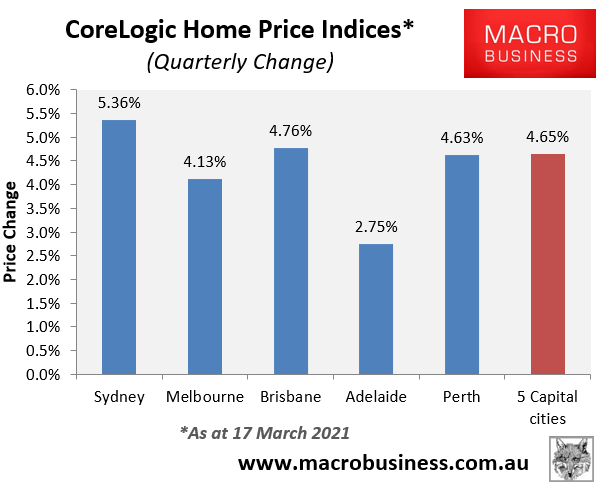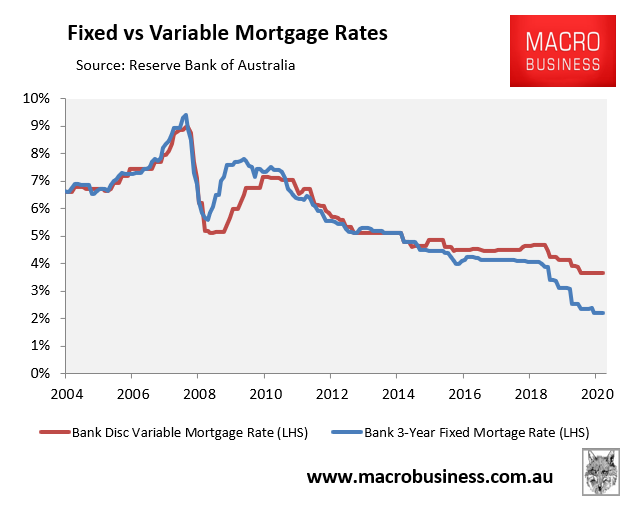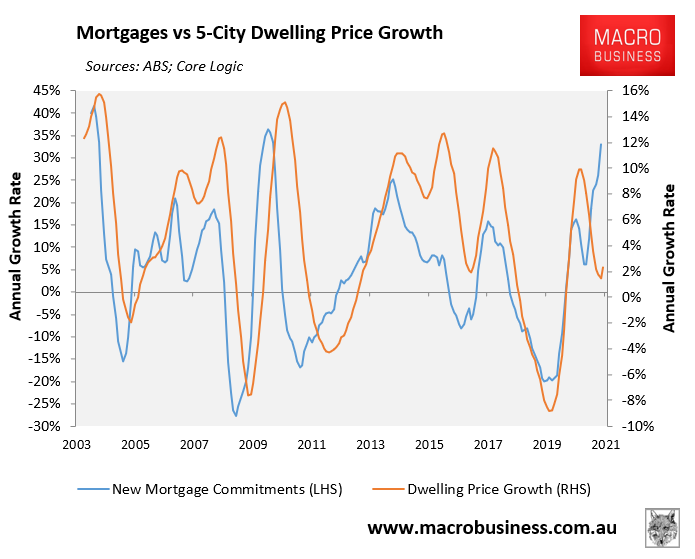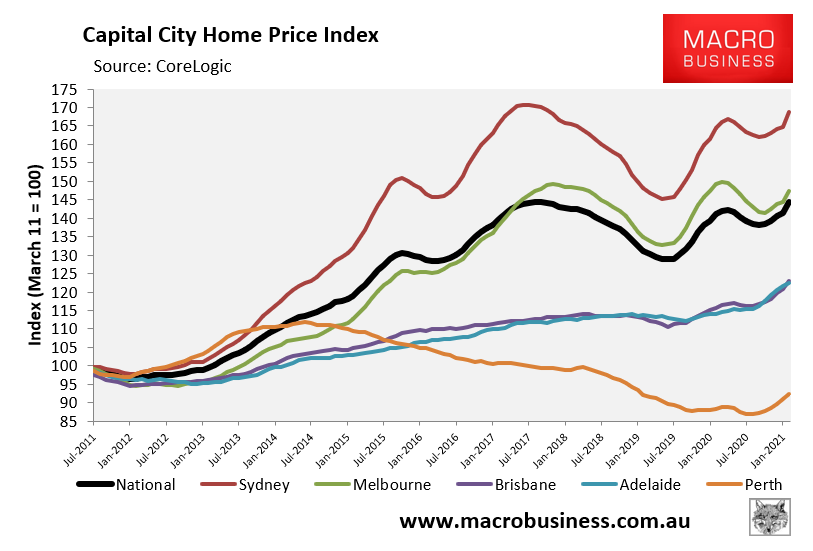Australia’s property market is booming with dwelling values rising at a scorching quarterly rate of 4.65% at the 5-city level, with all major markets experiencing strong growth:
This boom is unusual for two reasons:
- The boom is being driven by owner-occupiers rather than investors; and
- The boom has occurred while Australia is experiencing negative net overseas migration.
The key driver of the boom is obviously the explosion of mortgage commitments, which hit another record monthly high in February on the back of the extraordinary reduction in borrowing rates:
For new mortgage borrowers, rates well below 2% are now available on the market, which has greatly increased serviceability and the amount that homebuyers can borrow.
Regular readers will know that the growth in new mortgage commitments is the single best leading indicator for property prices. Thus, the mortgage surge points to ongoing rapid price appreciation:
Earlier this week, AMP Capital’s chief economist warned that rebooting mass immigration would give more legs to the property price boom:
“If we were to allow a return to normal immigration levels then you’re suddenly doubling demographic demand again at a time when the property market is still hot from low interest rates, then that could cause a real problem in terms of adding pressure on prices and worsening affordability”.
Immigration is a long-term structural factor that adds to housing demand and therefore property prices. Anyone doubting this only needs to look at the decoupling of Sydney and Melbourne property prices from the other capitals over the prior decade:
NSW and VIC (basically Sydney and Melbourne) received just under 70% of the nation’s net overseas migrants in the decade to March 2020 (1.48 million). Given tax policies, interest rates and credit availability was the same across the nation, the divergence in prices was obviously driven by migration differences.
Thus, if mass immigration is rebooted, it will obviously add further fuel to the housing bonfire, with Sydney and Melbourne most likely to be impacted.
There is a reason why the property industry always lobbies so hard increase immigration. Because the extra demand from immigration supports both construction and prices.





